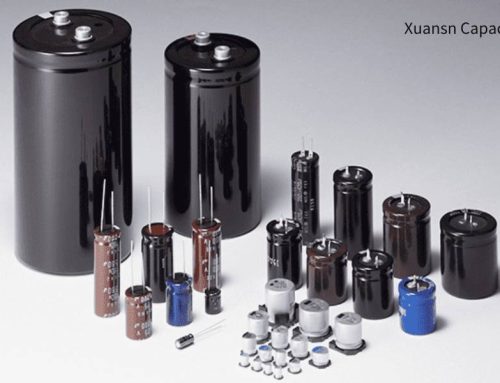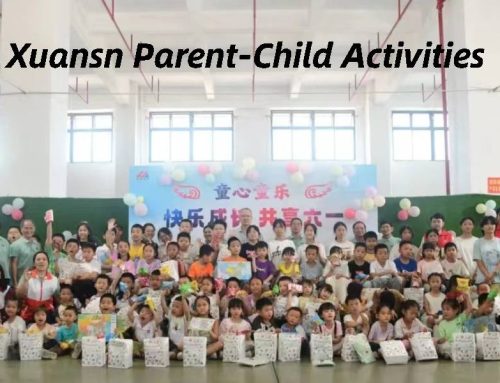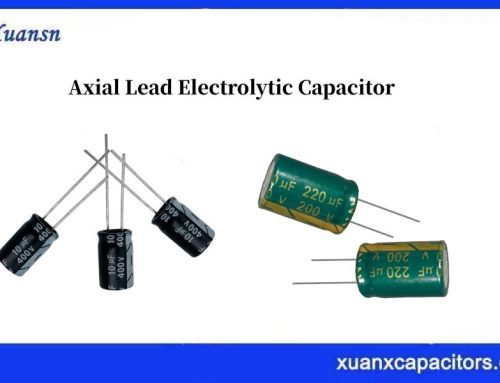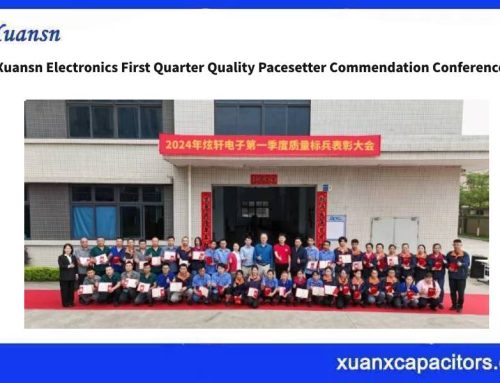Factors affecting capacitor life
During the operation of the capacitor, there are many factors that affect the capacitor life from the outside world and the system, including: temperature, voltage, harmonics, inrush current, etc. Researching and analyzing these factors that affect the actual service life of capacitors and proposing corresponding solutions are the focus of this chapter.
1. Temperature factor
The aging rate of the capacitor dielectric is a function of the dielectric temperature, which can usually be expressed by equation (4-4):
L=Ae^mt
In the formula
L—The life of the capacitor;
t—Medium temperature inside the capacitor; t
A, m—a constant determined by the characteristics of the medium.
According to the rule that the life span of the capacitor is reduced by half for every 7~8C increase in the internal medium temperature of the capacitor, in order to facilitate actual calculations, equation (4-4) can be converted into equation (4-5):
Lo/L=2(t-to/△t) (4-5)
In the formula
L—The life of the capacitor when the medium temperature is t;
Lo—The life of the capacitor when the medium temperature is to;
△t corresponds to the temperature rise of the internal medium when the life of the capacitor is reduced by half, usually △t=7~8℃.
It can be seen from equation (4-5) that when the life Lo at medium temperature to is obtained through experiments, the life L at medium temperature t can be estimated through equation (4-5). The higher the temperature of the medium inside the capacitor, the shorter the life of the capacitor.
The maximum temperature t of the medium inside the power capacitor can be obtained by equation (4-6):
t=t1+kt2(4-6)
In the formula
t1—Ambient temperature when the capacitor is running;
t2—The temperature rise of the hottest spot on the capacitor case;
k—The ratio of the temperature rise of the hottest point of the dielectric inside the capacitor to the temperature rise of the hottest point on the case. For different capacitors k=1.2~2, it can be obtained through experiments.
It can be seen from equation (4-6) that the important factor t that determines the life of the capacitor not only depends on the ambient temperature t1, but also, to a certain extent, is related to the temperature rise of the hottest point on the capacitor case t2 and the temperature rise of the hottest point of the internal medium. It is related to the ratio k of the temperature rise of the hottest spot on the box shell. Therefore, in order to increase the actual service life of the capacitor, every effort should be made to improve the heat dissipation conditions during operation of the capacitor to reduce the temperature rise of the case. When designing the capacitor, the internal thermal resistance of the capacitor should be reduced as much as possible and low-loss dielectric materials should be used. In order to minimize the k value of the capacitor. Long-term operation of capacitors under overload should be avoided (this point is controlled by the absolute minimum filter in the DC transmission system, and the overload operation of filters and parallel capacitors is strictly limited), because under overload conditions, the capacity of the capacitor and the total heating power The increase will increase the temperature rise of the hottest point of the case and the hottest point of the internal medium on the capacitor, accelerate the thermal aging of the internal medium of the capacitor, and shorten the actual service life.
In addition, for full film capacitors whose internal medium is biaxially oriented polypropylene film, the medium temperature t at the hottest point inside the capacitor should not exceed its maximum allowable operating temperature (usually 85~90°C) because when the temperature of the film Abnormal expansion will occur when the maximum allowable operating temperature is exceeded, causing the electrical strength of the film to decrease and the actual service life to be shortened.
When the dielectric of a capacitor operates at low temperatures below 0°C or even lower, the thermal aging of its dielectric is negligible. However, if the capacitor is put into grid operation when its internal medium temperature is lower than the lower limit temperature allowed by its design, serious damage will be caused to the capacitor. This is because at low temperatures below its lower limit temperature, the viscosity of the impregnating agent inside the capacitor increases, the fluidity becomes worse, the internal pressure decreases, and the electrical strength of the capacitor medium decreases significantly. If the capacitor is suddenly put into the power grid at this time, partial discharge will occur inside the capacitor under the action of inrush current and overvoltage, causing electrical aging of the capacitor and seriously affecting the actual service life of the capacitor. For capacitors installed in severely cold areas, if the filter and parallel capacitors are taken out of operation at night when the DC system is lightly loaded, and these frozen capacitors are put into operation in the morning when the load increases, if the internal medium temperature of these capacitors has When the temperature drops below its allowable lower limit, the capacitor is likely to be seriously damaged or even damaged early.
Due to the rapid development of China’s DC transmission system, there are DC converter stations under construction or to be built in various regions of the country, and a large number of filters and capacitors will also be put into operation. In view of this, operation and maintenance personnel must be in the infrastructure installation stage. Pay special attention to the operating temperature range of the capacitor marked on the capacitor nameplate. If the capacitor does not meet the local minimum ambient temperature due to poor design considerations, it should be promptly raised during the infrastructure construction stage and requested to be replaced.
2. Voltage factor
Capacitors operating at high voltages, especially very high DC voltages, will experience significant electrical aging of the dielectric in the capacitor due to the action of high electric fields. The relationship between the service life of the capacitor and the operating voltage can usually be expressed by equation (4-7):
L=K*U^-n (4-7)
In the formula
L—The life of the capacitor;
K—constant;
U—The operating voltage of the capacitor
n—voltage accelerated aging index
Assume that the life of the capacitor under voltage Uo is Lo, and the life of the capacitor under voltage U is L. Equation (4-7) can be rewritten as equation (4-8):
L/Lo=(U/Uo)^-n (4-8)
The voltage accelerated aging index in the formula depends on the dielectric material. For capacitors with all-polypropylene film dielectric, n is 9~11.
Equation (4-8) only represents the impact of the voltage factor on the service life of the capacitor in terms of electrical aging. In fact, as the voltage applied to the capacitor increases, the actual capacity Q and heat generation Qtanδ of the capacitor will increase with the voltage. The second power of the capacitor increases rapidly, which increases the temperature of the hottest point of the capacitor’s internal substance and accelerates the thermal aging of the capacitor dielectric. Therefore, the increase in voltage acting on the capacitor will accelerate both the electrical aging and thermal aging of the capacitor. Moreover, when the voltage acting on the capacitor exceeds the initial partial discharge voltage of the capacitor, its internal dielectric will be seriously damaged. A capacitor may fail if it is exposed to a voltage higher than its initial partial discharge voltage for only a few minutes to a few hours. Therefore, in order to ensure the reliability and long life of the capacitor operation, full attention should be paid to various overvoltages that may be added to the capacitor during operation, and necessary protection should be taken.
Power capacitors are different from other power equipment. When the capacitor is put in, the voltage of the local bus (AC grid side of the converter station) will increase. If there is a series reactor in series with the capacitor, the voltage on the capacitor terminal will be higher than the AC grid side voltage. In order to protect the capacitor from the effects of long-term steady-state overvoltage, full consideration should be given to the rated voltage of the capacitor when selecting it. Select the appropriate rated voltage value based on the above factors.
In addition to the above-mentioned steady-state overvoltage shortening the service life of the capacitor, when switching the capacitor or switching other electrical equipment in parallel with the capacitor, there will also be a long-term overvoltage and a considerable amplitude between the terminals of the capacitor. transient overvoltage. Of course, it is difficult to completely avoid these transient overvoltages acting on the capacitor during the entire operation process of the capacitor. It is stipulated in GB/T 11024.1-2010: “Before putting into operation, the residual voltage on the capacitor should not exceed 10% of the rated voltage (for this reason, after the converter station manually withdraws the filter and parallel capacitor device, the capacitor needs to After a certain period of discharge, it can be put into operation next time). When using a non-re-breakdown circuit breaker to switch the filter and parallel capacitor device, it will usually produce an applied voltage (root mean square) with the first peak value not exceeding 2√2 times. value), a transient overvoltage lasting no longer than 1/2 cycle. Under these conditions, the capacitor can be switched 1000 times per year.” In other words, the capacitor has the ability to withstand transient overvoltage specified by the above standards. However, if the temporary overvoltage acting on the capacitor exceeds the relevant specified value in the above standards, the internal dielectric of the capacitor will be damaged and the life of the capacitor will be shortened. For example:
(1) When the circuit breaker breaks the charging current of the capacitor, if the recovery voltage between the switch breaks exceeds the opening
Due to the withstand ability of the insulation of the switch break, heavy breakdown will occur between the switch breaks, and a high-amplitude abnormal voltage will appear between the capacitor terminals, causing damage to the dielectric in the capacitor or even breakdown. In order to ensure that the capacitor is protected from abnormal overvoltage during operation, a circuit breaker that does not cause heavy breakdown must be used for switching the capacitor. In view of this, the SF6 circuit breakers used in DC converter stations can meet the requirements.
(2) Due to the power reduction of the DC transmission system, after the filter and parallel capacitor are withdrawn from the system, there will still be a certain residual voltage between the terminals of the capacitor. If this residual voltage drops below 10% of the rated voltage stipulated in the standard, , the capacitor is put into power grid operation again. The superposition of the external voltage and the residual voltage on the capacitor may produce high inrush current and overvoltage, thereby damaging the capacitor and shortening its service life. In view of this, whether the DC converter station adopts automatic reactive power control (relying on the DC control protection system to control the next switching of the capacitor in automatic control mode to ensure that the residual voltage drops to 10% of the rated voltage) control or manual control, must meet this requirement
3. Harmonic factors
The impact of harmonics on capacitor life and reliability is mainly reflected in the following aspects:
3.1 The voltage waveform is distorted and the peak value increases.
When the high-order harmonic current flows into the capacitor, multiple higher-order harmonic voltages are superimposed on the fundamental voltage between the capacitor terminals. As a result, the voltage acting between the capacitor terminals is Distortion occurs and the peak value increases.
When the fundamental current and harmonic current flow through the capacitor at the same time, the voltage between the capacitor terminals
Pressure is
U=U1 x(1+∑1/n*In/I1) (4-9)
In the formula
U—The voltage acting between the capacitor terminals;
U1—the fundamental voltage acting between the capacitor terminals;
I1—fundamental current;Ii
In—nth harmonic current;
n—harmonic order.
It can be concluded from equation (4-9) that the greater the amplitude of the high-order harmonic current In and the lower the harmonic order n, the higher the voltage that appears between the capacitor terminals and the greater the impact on the life of the capacitor.
3.2 Actual capacity increases
When a high-order harmonic current flows through the capacitor, its actual capacity can be expressed by equation (4-10):
Q=Q1*[1+∑1/n*(In/I1)^2](4-10)
In the formula
Q—actual capacity of capacitor;
Q1—fundamental wave capacity of the capacitor;
That is, the actual capacity of the capacitor when harmonic current flows is the sum of the fundamental wave capacity and the harmonic capacity. The greater the high-order harmonic current In flowing into the capacitor and the lower the harmonic order n, the greater the actual capacity will be. As the capacity of the capacitor increases, the heat generation also increases, the temperature rise increases, the temperature of the medium inside the capacitor increases, thermal aging intensifies, and the actual life of the capacitor is shortened.
3.3 The resultant current increases
Higher harmonics increase the resultant current flowing into the capacitor, as shown in Equation (4-11):
I=√I1^2+∑In^2 (4-11)
In the formula, I—the total current flowing into the capacitor.
It can be seen from equation (4-11) that the total current flowing into the capacitor increases with the increase of the high-order harmonic current ΣIn^2. The copper loss generated on the current-carrying conductor inside the capacitor increases I^2R and the temperature rise. Especially when there is poor contact at the terminals and certain connecting parts of the capacitor, local overheating often occurs in these places. , affecting the life of the capacitor.
In addition to the above situations, when capacitors are put into AC system operation, the original harmonics in the AC system may also experience a certain “amplification” phenomenon. In order to prevent the occurrence of this harmonic “amplification” phenomenon, before designing and installing filters and parallel capacitor devices that provide reactive power, the order and content of harmonics in the local power grid should be carefully studied, and targeted measures should be taken. Appropriate measures.
4. Influence of surge
When the filter and parallel capacitor device are directly put into system operation, an inrush current with high-frequency attenuated oscillation characteristics will be generated at the moment of put-in. When a single capacitor bank is put in, due to the limitation of the positive impedance of the power supply, the first peak of the inrush current is usually caused by impregnating the capacitor with a larger dielectric constant and a smaller loss tangent value. Only appropriate consideration is given to other properties.
In summary, with the large-scale use of AC and DC filters and parallel capacitor devices in DC systems, more capacitors will be put into operation. In order to improve the quality of capacitor products, it is recommended that:
(1) Select good quality metallized films and impregnating agents, and control the raw materials well.
(2) Improve and perfect key processes, such as the production process of capacitor element winding, gold spraying, and dipping, and improve the process implementation level of operators during the production process.
(3) Improve production environment conditions, such as welding and vacuum impregnation processes, and strictly enforce process environment requirements
(4) Strictly implement national standards, pay attention to test conclusions and scientific management, and strictly control process quality




